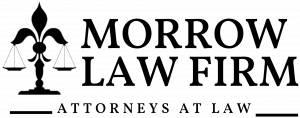
Top 10 Causes of Car Accidents in New Orleans: A Look at Patterns, Risks, and Legal Realities
"Negligence is often layered," said Morrow. "In many cases, there are multiple contributing causes, and understanding those causes helps paint a more accurate picture of liability and prevention."
The following are the ten most common contributing factors identified in accident reports, insurance claims, and litigation filings from the New Orleans area over the past five years:
1. Distracted Driving
Use of smartphones, infotainment systems, and other in-vehicle distractions remains the leading cause of accidents. Reports consistently show that even a brief lapse in attention can lead to rear-end collisions, red-light violations, and pedestrian impacts.
2. Driving Under the Influence (DUI)
Alcohol and drug impairment—both prescription and illegal substances—continue to contribute to serious collisions in Orleans Parish. Nighttime crashes, particularly during weekends and festival seasons, frequently involve impaired drivers.
3. Speeding
Exceeding posted speed limits or driving too fast for weather conditions plays a role in both the frequency and severity of crashes. On surface streets like Claiborne Avenue and interstate segments such as I-10 through Mid-City, speed remains a consistent factor in multi-vehicle incidents.
4. Aggressive Driving and Road Rage
Tailgating, weaving through traffic, and intentionally escalating encounters are increasingly noted in urban traffic reports. Aggressive behavior often leads to secondary accidents as other drivers swerve or brake in response.
5. Poor Weather Conditions
Rainstorms, fog, and hurricane-season flooding all impact visibility and traction. While weather is not avoidable, failure to adjust driving behavior in hazardous conditions contributes to liability in resulting collisions.
6. Failure to Yield
Improper left turns, merging errors, and ignoring right-of-way laws at intersections often result in side-impact and head-on crashes. Intersections near Canal Street, Elysian Fields, and other major corridors are frequently cited.
7. Running Red Lights and Stop Signs
Intersection surveillance footage and witness testimony in court proceedings regularly confirm that failure to obey traffic control devices is a leading factor in severe injury cases, particularly involving pedestrians and cyclists.
8. Fatigue and Drowsy Driving
Commercial drivers and shift workers are especially vulnerable to sleep-related impairment. Lack of rest impairs judgment and reaction time to a degree comparable to intoxication, according to multiple traffic safety studies.
9. Vehicle Defects or Maintenance Failures
Faulty brakes, bald tires, and steering malfunctions often emerge during post-accident investigations. While not always obvious at the scene, mechanical issues can significantly impact liability assessments.
10. Inadequate Infrastructure or Poor Road Conditions
Potholes, inadequate signage, and malfunctioning traffic lights are often contributing factors. In some cases, government entities or third-party contractors may share liability due to lack of maintenance or improper design.
"Crash reports don’t always tell the whole story," added Morrow. "Legal investigations often uncover overlapping causes—such as fatigue layered with distraction or impaired judgment made worse by poor road conditions."
Understanding the underlying causes of motor vehicle accidents not only informs policy and infrastructure discussions but also affects legal outcomes in injury cases. In civil litigation, comparative fault laws in Louisiana mean that multiple parties can be assigned percentages of responsibility. This includes not only drivers but also passengers, employers, vehicle manufacturers, or municipal agencies.
New Orleans’ unique combination of narrow streets, aging infrastructure, tourism traffic, and variable weather conditions make the region particularly vulnerable to many of the issues listed above. In light of these realities, legal professionals, first responders, and policy advocates continue to call for a mix of enforcement, education, and engineering improvements.
For additional information about personal injury or auto accident law in Louisiana, visit Morrow Law Firm’s official website or consult publicly available resources from the Louisiana Department of Transportation and Development (DOTD).
Morgan Thomas
Rhino Digital, LLC
+1 504-875-5036
email us here
Visit us on social media:
Facebook
Distribution channels: Automotive Industry, Culture, Society & Lifestyle, Insurance Industry, Law
Legal Disclaimer:
EIN Presswire provides this news content "as is" without warranty of any kind. We do not accept any responsibility or liability for the accuracy, content, images, videos, licenses, completeness, legality, or reliability of the information contained in this article. If you have any complaints or copyright issues related to this article, kindly contact the author above.
Submit your press release

